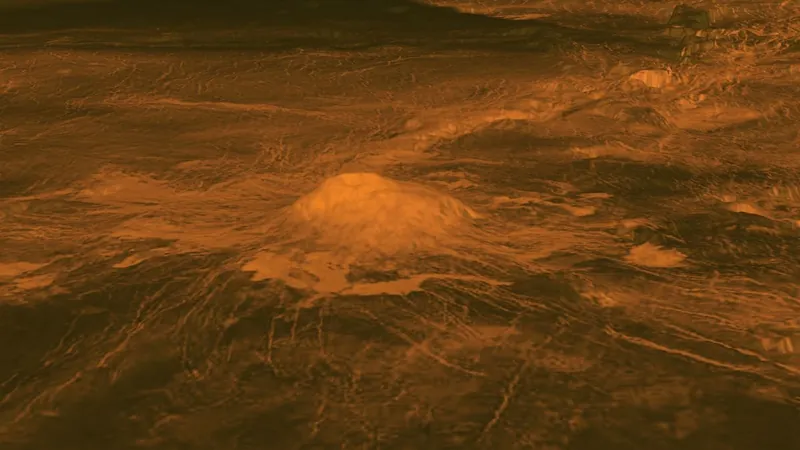
Scientists Unravel the Mystery of Venus' Volcanic Fury: A New Discovery!
2025-04-04
Author: John Tan
Scientists Unravel the Mystery of Venus' Volcanic Fury: A New Discovery!
In a groundbreaking study, scientists may have pinpointed the elusive driving force behind the staggering volcanic activity on Venus, the hottest planet in our solar system. While previous estimates indicate that Venus boasts approximately 85,000 volcanoes, a new theory suggests that convection processes beneath its scorched surface play a significant role in fueling this intense geological phenomenon.
According to insights from researchers at Washington University in St. Louis, advanced fluid dynamic modeling has revealed that Venus' crust may be capable of supporting convection. This process involves heated materials rising toward the surface while cooler materials sink, potentially facilitating the transfer of extreme heat from the planet's interior to its scorching surface, where temperatures soar to an incredible 870 degrees Fahrenheit (466 degrees Celsius). This intense heat contributes to the evident signs of volcanic activity, which include melting surfaces and varied geological features.
Lead author Slava Solomatov, a professor of Earth, environmental, and planetary sciences, emphasizes that the concept of convection occurring within Venus' crust has not been widely considered until now. His team’s calculations suggest that convection may not only be possible but likely, paving the way for fresh insights into the evolutionary history of the planet. “If true, it gives us new insight into the evolution of the planet,” Solomatov stated.
Convection processes on Earth, such as those responsible for tectonic plate movements and volcanic eruptions, have long been understood. Interestingly, NASA’s New Horizons mission discovered similar convection currents on Pluto, indicating that this phenomenon could be more common than previously thought in our solar system.
For Venus, the type of convection believed to drive its volcanoes occurs specifically in the thin outer crust rather than the mantle. This mechanism could explain both surface melting and the distinctive placement and types of volcanoes scattered across the planet. “Convection in the crust could be a key missing mechanism,” Solomatov noted.
Looking ahead, researchers plan to merge mathematical modeling with observations of Venus's surface to enhance their understanding of its geology. Future missions may also capitalize on high-resolution gravity measurements to uncover density and temperature variations within the crust, potentially confirming the presence of convection processes.
As scientists push the boundaries of our knowledge about Venus, one thing is clear: the planet may hold more secrets than we ever imagined, and its volcanic might is just beginning to be understood! Stay tuned for more thrilling discoveries in the quest to unlock the mysteries of our enigmatic celestial neighbor!





 Brasil (PT)
Brasil (PT)
 Canada (EN)
Canada (EN)
 Chile (ES)
Chile (ES)
 Česko (CS)
Česko (CS)
 대한민국 (KO)
대한민국 (KO)
 España (ES)
España (ES)
 France (FR)
France (FR)
 Hong Kong (EN)
Hong Kong (EN)
 Italia (IT)
Italia (IT)
 日本 (JA)
日本 (JA)
 Magyarország (HU)
Magyarország (HU)
 Norge (NO)
Norge (NO)
 Polska (PL)
Polska (PL)
 Schweiz (DE)
Schweiz (DE)
 Singapore (EN)
Singapore (EN)
 Sverige (SV)
Sverige (SV)
 Suomi (FI)
Suomi (FI)
 Türkiye (TR)
Türkiye (TR)
 الإمارات العربية المتحدة (AR)
الإمارات العربية المتحدة (AR)